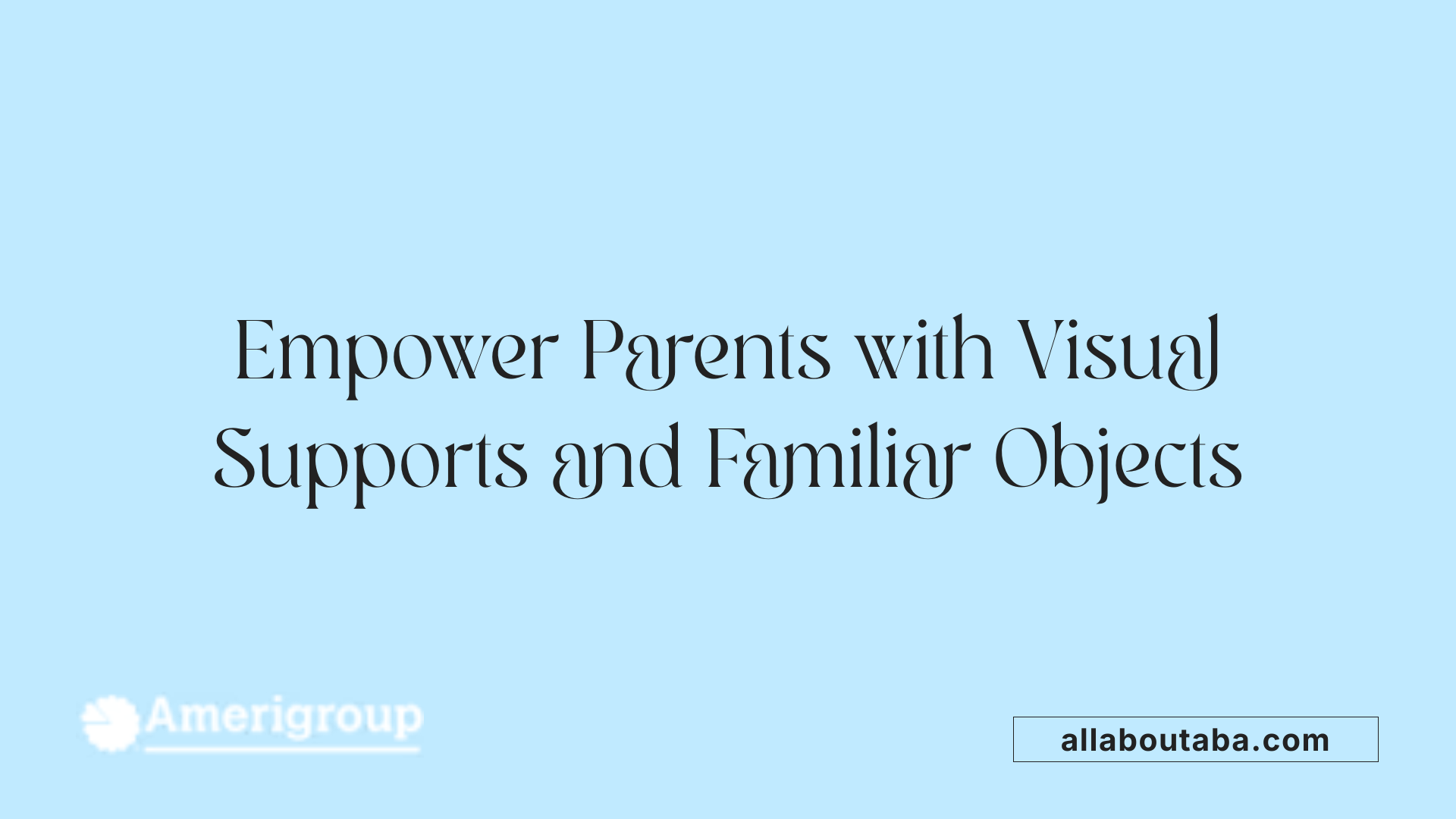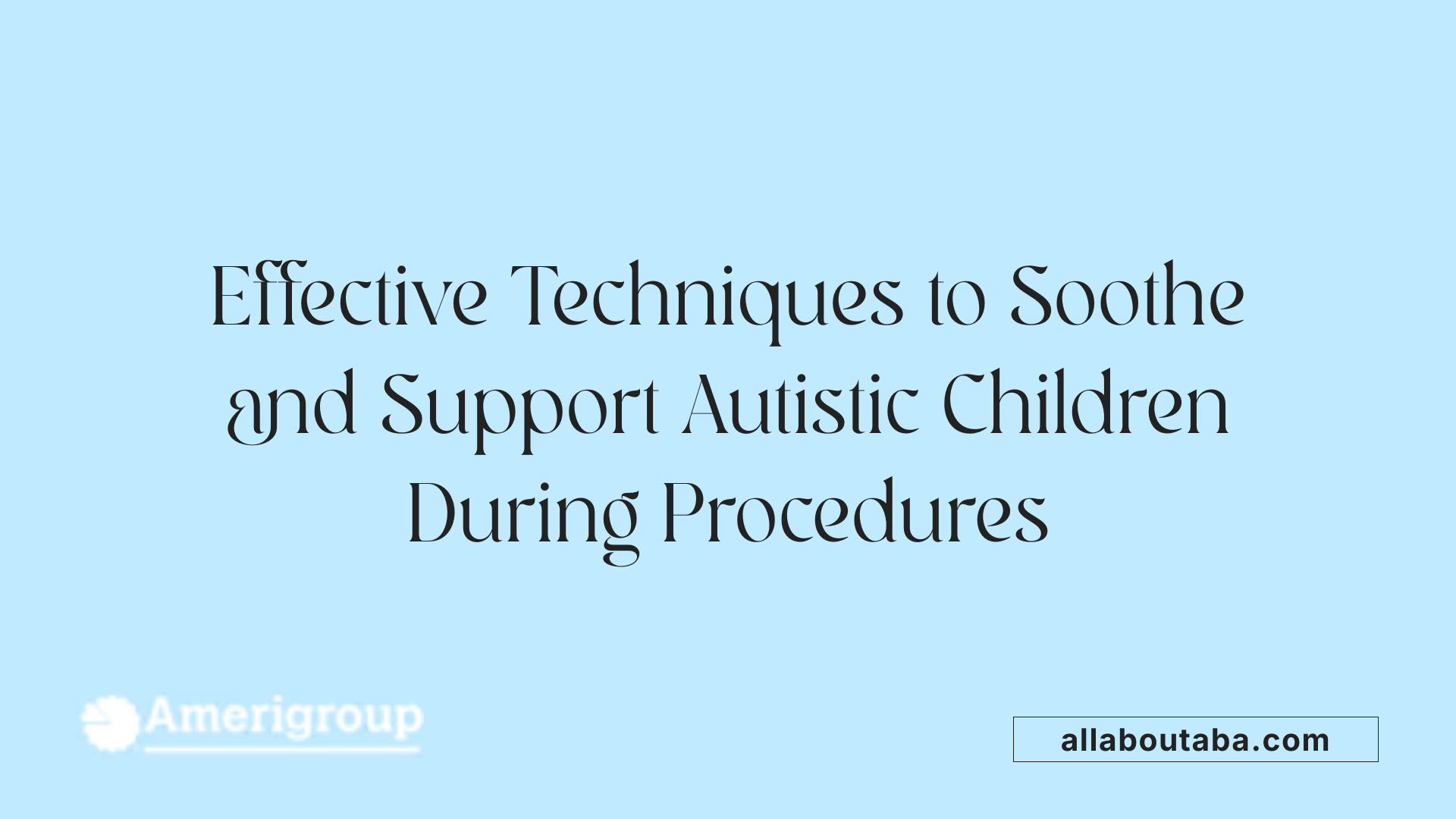Understanding the Needs of Autistic Children During Medical Procedures
Preparing autistic children for medical procedures requires a comprehensive, child-centered approach that considers their unique sensory, communication, and emotional needs. Early planning, using visual supports, familiar objects, and collaboration among caregivers and healthcare providers, can significantly reduce anxiety and enhance cooperation. This article explores effective strategies and practical tips to support autistic children through medical visits, assessments, and surgeries, ensuring these experiences are as positive and less stressful as possible.
Establishing a Child-Centered Preparation Program

How can parents prepare autistic children for medical procedures?
Parents play a vital role in making medical procedures less stressful for children with autism. One effective strategy is to use visual supports like picture schedules, social stories, and visual aids. These tools help children understand each step of the process, which can significantly reduce feelings of uncertainty and fear.
Familiarity with the environment is also important. Parents can arrange pre-visit tours or allow children to explore medical settings through pictures or videos beforehand. Role-playing using medical tools and procedures at home can further prepare children by simulating what they will experience. This gradual exposure builds comfort and trust.
Incorporating calming techniques such as deep breathing exercises, sensory tools, and preferred activities can help manage stress during the visit. For example, bringing along favorite toys or sensory objects can serve as comfort items and distract from any discomfort. Reward systems, like offering stickers or praise after successful procedures, motivate children and promote positive associations.
Effective communication is essential. Using clear, honest language—both verbally and visually—helps children understand what to expect. Caregivers and healthcare providers should work closely together, sharing detailed information about the child's needs. Many organizations, like the Vanderbilt Kennedy Center and Autism Speaks, provide specialized resources and toolkits. These include behavioral strategies, sample social stories, and tips tailored specifically for children with autism.
Finally, training staff in autism-friendly communication and support approaches enhances the child's experience. When parents, caregivers, and professionals collaborate seamlessly, they can create a supportive environment that reduces anxiety, encourages cooperation, and ensures safety during medical procedures.
Collaborative Planning with Healthcare Providers and Families

How should caregivers and healthcare providers prepare children with autism for hospital assessments and surgeries?
Preparing children with autism for hospital visits, surgeries, and assessments demands a thoughtful, individualized approach. It involves careful planning, effective communication, and teamwork among parents, healthcare providers, and specialists.
One of the foundational strategies is using visual supports such as picture schedules and social stories. These tools help explain the upcoming procedures, what the hospital environment looks like, and who the child will meet. For example, a social story might detail each step of a surgery or assessment, easing fears by providing predictability.
Pre-visit tours or visits to the hospital can be especially beneficial. Familiarity with the physical space and staff helps reduce the child's anxiety by making the environment seem less unfamiliar. Incorporating familiar objects from home, like comfort toys or routines, creates a sense of security.
Role-playing at home, where the child practices medical procedures with toy or pretend instruments, can also be helpful. Rehearsing what will happen—such as having a pretend blood draw—prepares the child emotionally and behaviorally.
Maintaining established routines as much as possible on the day of the visit is important. It reassures the child that familiar activities will continue despite the hospital setting. Distraction tools—like electronic devices, favorite toys, or sensory objects—offer additional reassurance during procedures.
Collaboration with professionals like Child Life specialists can greatly influence outcomes. These specialists are trained to support children through medical experiences by explaining procedures, providing comfort, and implementing coping strategies tailored to the child's needs.
Creating a detailed 'All About Me' sheet helps staff understand the child's unique needs, triggers, communication methods, and preferred comfort items. Sharing this with all involved staff ensures consistent, sensitive care.
Involving the medical team in planning is crucial. Discussions should include possible accommodations such as sedation options, sensory adjustments like dimmed lighting or noise reduction, and using distraction or relaxation techniques.
A comprehensive, personalized plan—integrating visual supports, familiar objects, behavioral strategies, and medical accommodations—can significantly reduce stress and improve cooperation. This proactive, consultative process aligns expectations and ensures that everyone is working toward making the hospital experience as positive as possible for children with autism.
Supporting Children During Medical Interventions

What strategies can help autistic children cope during medical visits or procedures?
Preparing autistic children for medical interventions involves several tailored strategies that address their unique needs. Visual supports, such as social stories, picture schedules, and visual aids, are effective tools to explain what will happen during the visit. These tools help children understand procedures in a predictable and non-threatening way, greatly reducing their anxiety.
Familiar comfort items, sensory tools, and distraction techniques are also important. Bringing beloved toys, stuffed animals, or blankets can provide a sense of security. Sensory items like noise-canceling headphones, fidget toys, or calming music help manage sensory sensitivities. During procedures, offering activities such as reading a favorite book or using electronic devices can divert attention and soothe distress.
Calming techniques further support the child's emotional regulation. Deep breathing exercises, offering choices about their care (such as selecting a toy or the order of activities), and honest, simple explanations help empower the child. Clear communication using literal language minimizes misunderstandings and builds trust. For example, describing the device as
Creating a Calming Environment and Using Communication Aids

Employ visual and auditory aids, relaxation exercises, and sensory modifications.
Children with autism often experience heightened anxiety during medical procedures, but creating a soothing environment can greatly ease their stress. Visual supports like social stories and picture schedules help children understand what to expect, reducing uncertainty and fear. Incorporating sensory modifications such as dimmed lights, calming music, or sensory rooms with weighted blankets and sensory toys can make the clinical setting more manageable. Relaxation exercises, including deep breathing, guided imagery, or gentle rocking, can also be introduced beforehand to help children calm their minds and bodies.
Using these aids, healthcare providers and parents can prepare the child by gradually acclimating them to the environment and the procedures involved. This preparation promotes a sense of control and safety, essential for successful medical care.
Bring communication devices like tablets, picture boards, or PECS.
Many children with autism face communication challenges that can increase their anxiety during medical visits. Bringing familiar communication tools such as tablets equipped with speech apps like Proloquo2Go, picture communication boards, or PECS (Picture Exchange Communication System) devices allows children to express their needs, discomfort, or questions more easily.
These devices serve as vital bridges between the child and medical staff, especially when verbal communication is difficult. Demonstrating to staff how the child communicates can foster understanding and cooperation, leading to smoother procedures.
Ensure medication and pain management are discussed and aligned with the child's needs.
Effective pain management and medication use are crucial components in preparing autistic children for medical procedures. Parents and healthcare providers should have clear discussions beforehand to determine whether sedation or other pain-relief options are appropriate. Ensuring medication is given as usual unless otherwise directed helps maintain the child's routine, reducing additional stress.
In cases of high anxiety, discussing relaxing medications or pre-medication options with the medical team can facilitate a calmer experience. Collaborating on a pain and medication plan tailored to the child's sensitivities and health needs is essential for safe and comfortable care.
Partner with healthcare providers to advocate for individualized care.
Advocacy and communication between parents, caregivers, and healthcare providers are critical. Parents should share detailed information about their child's preferences, triggers, communication methods, and successful coping strategies. Using an 'All About Me' sheet or similar personalized profiles helps staff understand specific needs.
Partnering with providers ensures that accommodations—such as additional staff support, extra time, or specific sensory modifications—are arranged in advance. This collaborative approach promotes a respectful, family-centered care experience that recognizes and addresses the unique needs of children with autism.
Educational resources and communication aids available for medical preparation
There are numerous resources to assist in medical preparation for autistic children. Visual supports, social stories, and communication tools like PECS and TEACCH facilitate understanding and cooperation. Organizations such as Autism Speaks and the CDC provide free toolkits, printable visuals, and developmental screening guides.
Technologies including communication apps, virtual reality systems, and speech-generating devices further enhance engagement and comprehension during visits. Training programs for healthcare professionals also support the creation of sensory-friendly, communication-appropriate environments, ensuring that autistic children receive respectful and effective care.
| Resource Type | Examples | Purpose | Additional Info |
|---|---|---|---|
| Visual Supports | Social stories, picture schedules | Reduce anxiety, prepare children | Available online or via health care providers |
| Communication Aids | PECS, tablets, speech apps | Facilitate expression | Supported by organizations like Autism Speaks |
| Sensory Supports | Weighted blankets, sensory rooms | Calm sensory overload | Often available in specialized clinics |
| Educational Resources | CDC toolkits, provider guides | Educate families and professionals | Free downloads from official sites |
Searching tips:
- Communication aids
- Visual supports
- Social stories
- Autism-friendly medical resources
- Sensory supports
Ensuring a Supportive Medical Experience for Autistic Children
Successfully preparing autistic children for medical procedures involves a collaborative, tailored approach that emphasizes understanding, communication, and comfort. Utilizing visual supports, familiarization techniques, and sensory-friendly modifications reduces anxiety and fosters cooperation. Active involvement of parents, caregivers, and healthcare professionals—supported by resources like social stories, communication devices, and trained staff—creates an environment where children can navigate medical interventions with less stress and more confidence. By prioritizing individual needs and maintaining routines, medical visits can become positive experiences that promote ongoing health and well-being for children with autism.
References
- Autistic Children & Surgery, Innovative Ways to Overcome a ...
- [PDF] Preparing for a Medical Appointment for Autism Spectrum Disorder ...
- Autism and hospital visits
- [PDF] Autism Friendly Support - Rady Children's Hospital
- Working with Children with Autism Undergoing Health-Care ...
- Preparing Children with Autism Spectrum Disorder for Surgery
- Autism and the doctor visit: Communication tips for success
- Easing Anxiety During Medical Procedures: Positioning for Comfort
- Tips for More Positive Office Visits for Patients with ASD
- Doctor Visit Tips for Autistic Children: ABA-Friendly Ways to Prepare







